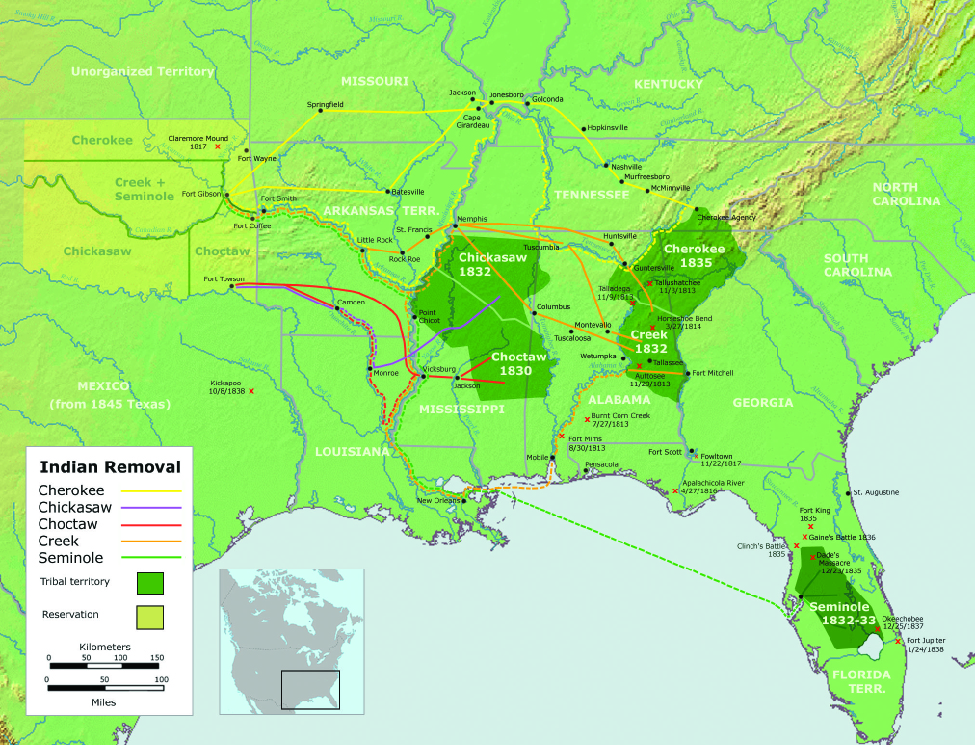| << Chapter < Page | Chapter >> Page > |
The next year, in
Worcester v. Georgia , the Court ruled that whites could not enter tribal lands without the tribe’s permission. White Georgians, however, refused to abide by the Court’s decision, and President Andrew
Jackson , a former Indian fighter, refused to enforce it.

By the time of the Civil War, most Indian tribes had been relocated west of the Mississippi. However, once large numbers of white Americans and European immigrants had also moved west after the Civil War, Native Americans once again found themselves displaced. They were confined to reservations, which are federal lands set aside for their use where non-Indians could not settle. Reservation land was usually poor, however, and attempts to farm or raise livestock, not traditional occupations for most western tribes anyway, often ended in failure. Unable to feed themselves, the tribes became dependent on the
Bureau of Indian Affairs (BIA) in Washington, DC, for support. Protestant missionaries were allowed to “adopt” various tribes, to convert them to Christianity and thus speed their assimilation. In an effort to hasten this process, Indian children were taken from their parents and sent to boarding schools, many of them run by churches, where they were forced to speak English and abandon their traditional cultures.
GALE|CX3401802046&userGroupName=lnoca_hawken&jsid=f44511ddfece4faafab082109e34a539 (April 10, 2016).
In 1887, the
Dawes Severalty Act , another effort to assimilate Indians to white society, divided reservation lands into individual allotments. Native Americans who accepted these allotments and agreed to sever tribal ties were also given U.S. citizenship. All lands remaining after the division of reservations into allotments were offered for sale by the federal government to white farmers and ranchers. As a result, Indians swiftly lost control of reservation land.

Notification Switch
Would you like to follow the 'American government' conversation and receive update notifications?